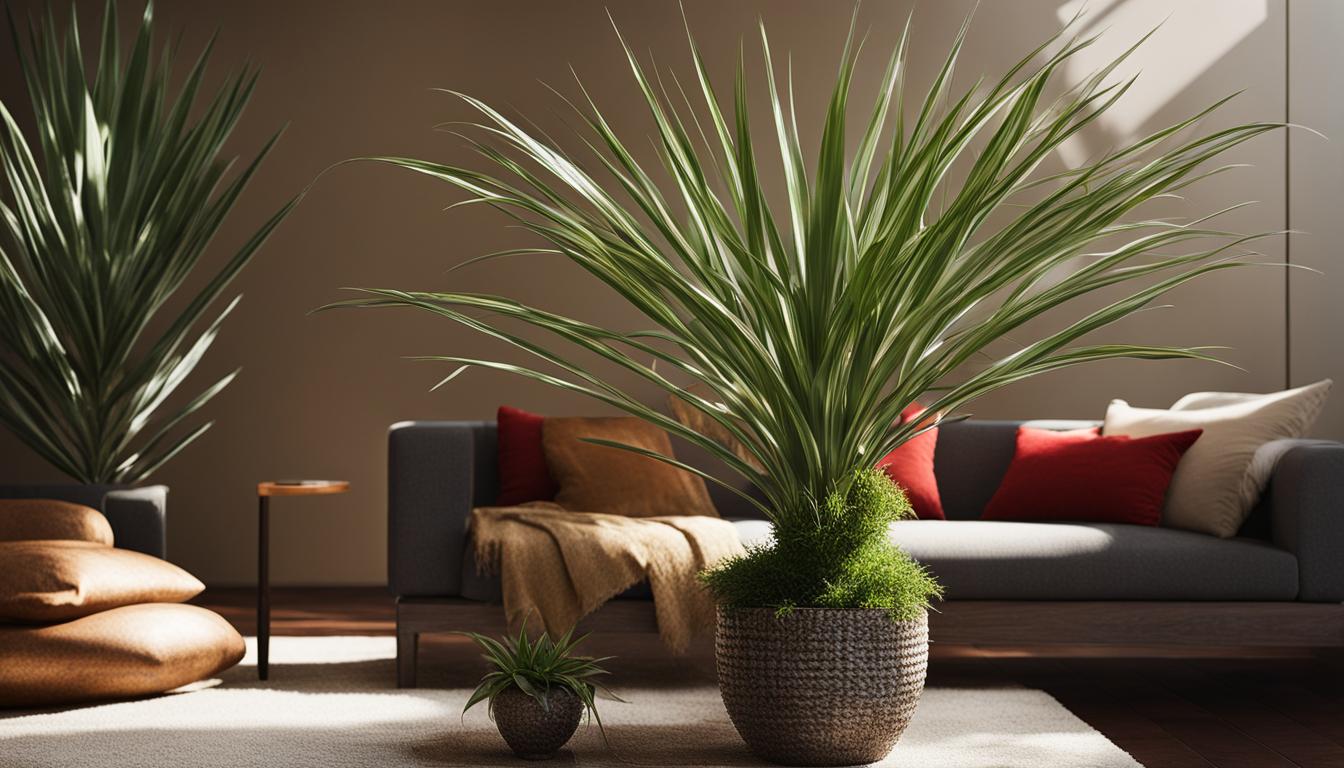
Growing beautiful and vibrant indoor plants is a passion of mine. One of my favorite plant varieties is the Dracaena marginata, also known as the Dragon Tree.
This tropical plant has become increasingly popular in the United States due to its stunning appearance, air-purifying properties, and low maintenance requirements.
The Dracaena marginata features tall, slender stems and sword-like leaves with deep green color and striking red borders. Its unique aesthetic adds a touch of elegance to any indoor space.
Not only is it visually appealing, but it also acts as a natural air purifier, making it an excellent choice for improving indoor air quality.
When it comes to caring for Dracaena marginata, it’s essential to provide it with the right conditions. This plant thrives in bright indirect light, so placing it near a window with filtered sunlight is ideal.
Also, ensuring well-draining soil and maintaining temperatures between 70° to 80°F will promote healthy growth.
With its versatility, the Dracaena marginata comes in various varieties, including green, red, yellow, and white. Each variation adds its unique vibrancy to indoor spaces, allowing for personal style and preference.
Join me as I explore the different types of Dracaena plants and offer valuable tips on planting and care techniques. Let’s unlock the secrets to mastering Dracaena growth in the United States and create beautiful, thriving indoor environments.
Types of Dracaena
Dracaena plants come in various types, each with its own unique characteristics and appeal. Whether you’re looking for a tall and slender variety or one with broad, glossy leaves, there’s a Dracaena plant that will suit your preferences. Here are some popular types of Dracaena plants:
1. Dracaena marginata (Dragon Tree)
This is one of the most common types of Dracaena plants, known for its tall, slender stems and leaves with striking red or purple margins. The Dragon Tree adds a touch of elegance to any indoor space and is a favorite among plant enthusiasts.
2. Dracaena fragrans (Corn Plant)
The Corn Plant is another popular Dracaena variety, prized for its broad, glossy leaves and ability to thrive in low light conditions. It’s an excellent choice for those seeking a low-maintenance indoor plant that can tolerate a range of lighting conditions.
3. Dracaena reflexa (Song of India)
The Song of India variety features beautiful, variegated leaves in shades of yellow or cream. It adds a touch of tropical flair to any indoor space and is known for its ability to purify the air.
4. Dracaena draco (Canary Islands Dragon Tree)
With its unique branching pattern and stiff, sword-like leaves, the Canary Islands Dragon Tree is a slow-growing Dracaena variety that makes a statement. It’s a hardy plant that can thrive in a variety of conditions.
These are just a few examples of the many types of Dracaena plants available. Each variety offers its own distinct beauty and benefits, making Dracaena plants a popular choice for indoor gardening enthusiasts.
| Type | Description |
|---|---|
| Dracaena marginata | Tall, slender stems and leaves with red or purple margins |
| Dracaena fragrans | Broad, glossy leaves; can tolerate low light conditions |
| Dracaena reflexa | Variegated leaves in shades of yellow or cream |
| Dracaena draco | Distinctive branching pattern; stiff, sword-like leaves |
Planting and Care Tips for Dracaena
When it comes to planting and caring for Dracaena, there are a few important factors to keep in mind. The first step is to select the right location for your indoor plants. Dracaena plants thrive in bright indirect light, although certain varieties can tolerate lower light levels.
Maintaining a temperature range of 65-80°F and humidity levels between 40-50% is ideal for their growth.
Choosing the appropriate pot size and soil is crucial for the health of your Dracaena plants. They require well-draining soil that retains some moisture without becoming waterlogged.
When it comes to watering, it’s best to wait until the top 1-2 inches of soil feel dry to the touch before watering again. Overwatering can lead to root rot, so be mindful of not saturating the soil.
Regular fertilization is also important to ensure optimal growth. I recommend using a balanced, water-soluble fertilizer every 4-6 weeks during the growing season.
This will provide the necessary nutrients for your Dracaena plants to thrive. Additionally, pruning can help maintain the desired shape and size of the plant. Late winter or early spring is the best time to prune your Dracaena plants.
| Aspect | Details |
|---|---|
| Light | Prefers bright, indirect light but can tolerate lower light conditions. |
| Watering | Allow the top soil to dry out before watering; do not overwater. |
| Humidity | Enjoys higher humidity but can adapt to average home humidity. |
| Temperature | Prefers temperatures between 60-75°F (15-24°C). Avoid cold drafts. |
| Soil | Well-draining potting mix. |
| Fertilization | Feed with a balanced liquid fertilizer every 2-3 weeks during growth. |
| Repotting | Repot every 2-3 years or when roots become crowded. |
| Pruning | Prune to remove dead or yellowing leaves and to shape the plant. |
| Special Properties | Known for air-purifying qualities; removes formaldehyde, benzene, etc. |
| Toxicity | Toxic to pets if ingested, can cause vomiting and drooling in animals. |
Lastly, it’s crucial to monitor your plants for pests. Common pests that can affect Dracaena include spider mites, mealybugs, and scale insects.
Regularly inspect the leaves for any signs of infestation, such as webbing or sticky residue. If you notice any pests, treat them promptly with organic insecticides or by wiping the leaves with a mild soap solution.
FAQ
What is the scientific name for the Madagascar Dragon Tree?
The scientific name for the Madagascar Dragon Tree is Dracaena marginata.
What are the main features of the Dragon Tree?
The Dragon Tree features tall, slender stems and sword-like leaves that are deep green with red borders.
Does the Dragon Tree have air-purifying properties?
Yes, the Dragon Tree is known for its air-purifying properties, making it a great choice for indoor environments.
What are the preferred light conditions for the Dragon Tree?
The Dragon Tree prefers bright indirect light conditions.
What type of soil does the Dragon Tree require?
The Dragon Tree requires well-draining soil.
What is the ideal temperature range for the Dragon Tree?
The Dragon Tree can tolerate a wide range of temperatures but prefers temperatures between 70° to 80°F.
How tall does the Dragon Tree typically grow indoors?
When grown indoors, the Dragon Tree typically reaches a height of about 6 feet.
What are the different varieties of Dracaena plants?
The different varieties of Dracaena plants include green, red, yellow, and white varieties.
What are some popular types of Dracaena plants other than the Dragon Tree?
Other popular types of Dracaena plants include the Corn Plant, the Song of India, the Canary Islands Dragon Tree, Gold Dust Dracaena, Lucky Bamboo, and Warneckii Dracaena.
What factors should be considered when planting and caring for Dracaena?
Factors to consider when planting and caring for Dracaena include choosing the right location, providing the appropriate light conditions, temperature and humidity levels, selecting the right pot size and soil, proper watering, fertilizing, pruning, and monitoring for pests.

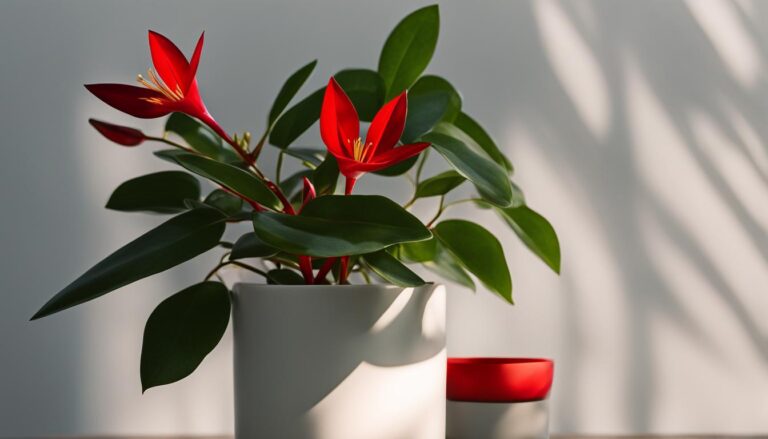
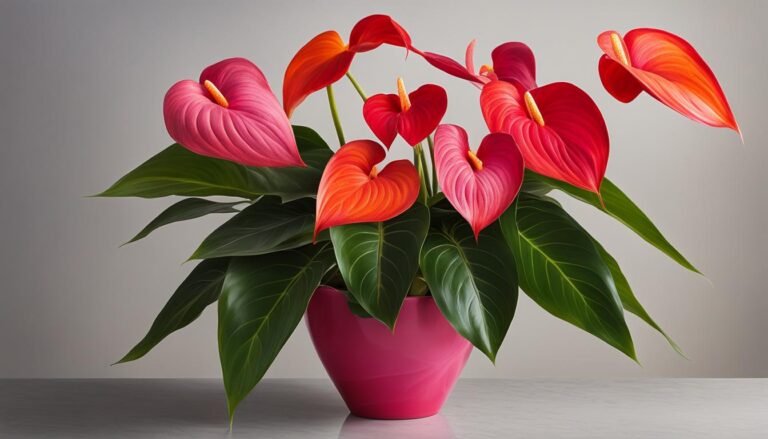

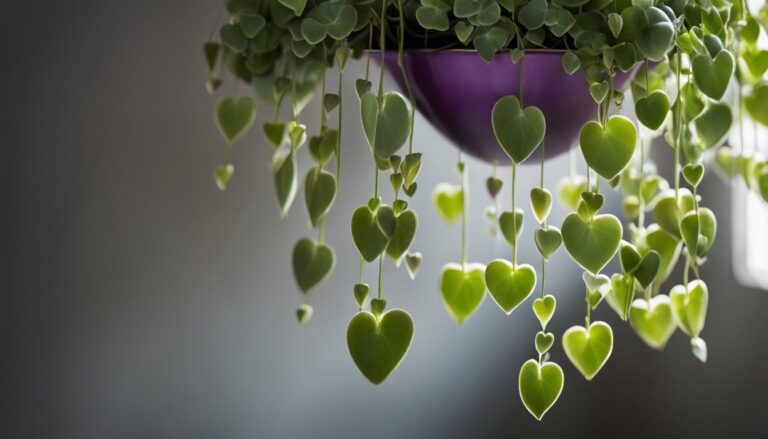
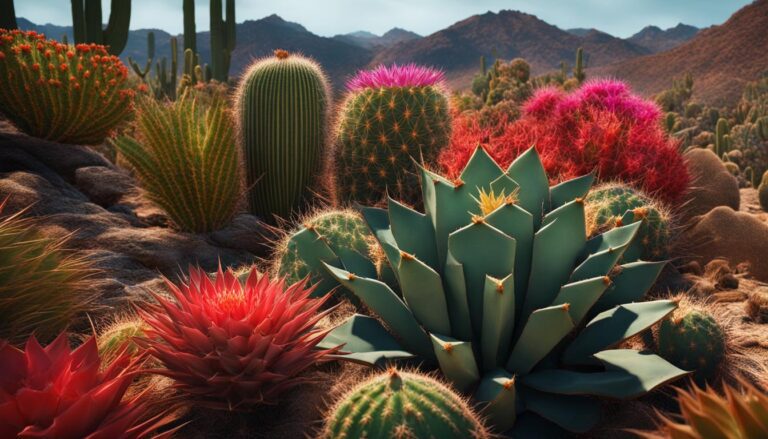

2 Comments
Comments are closed.